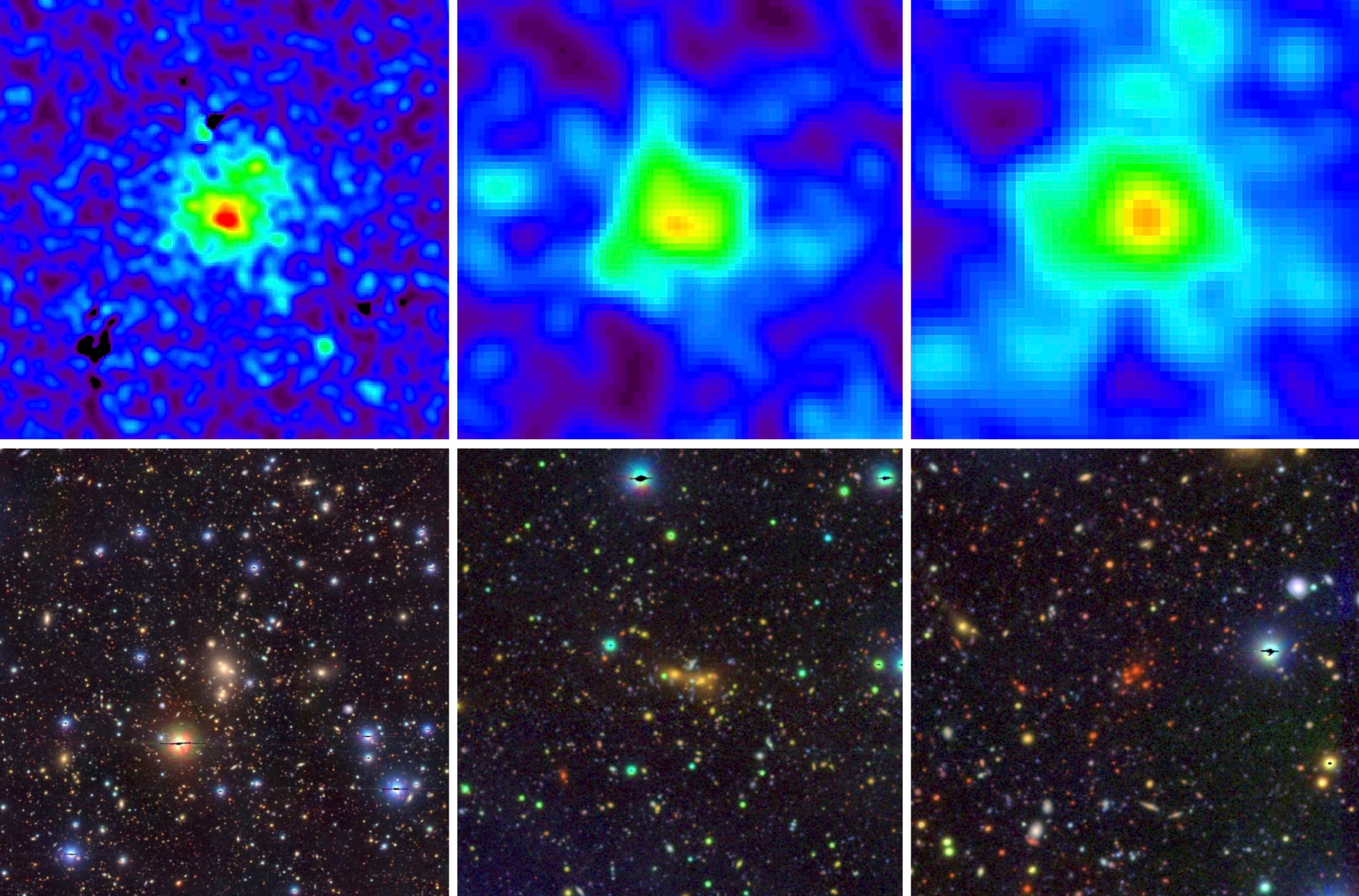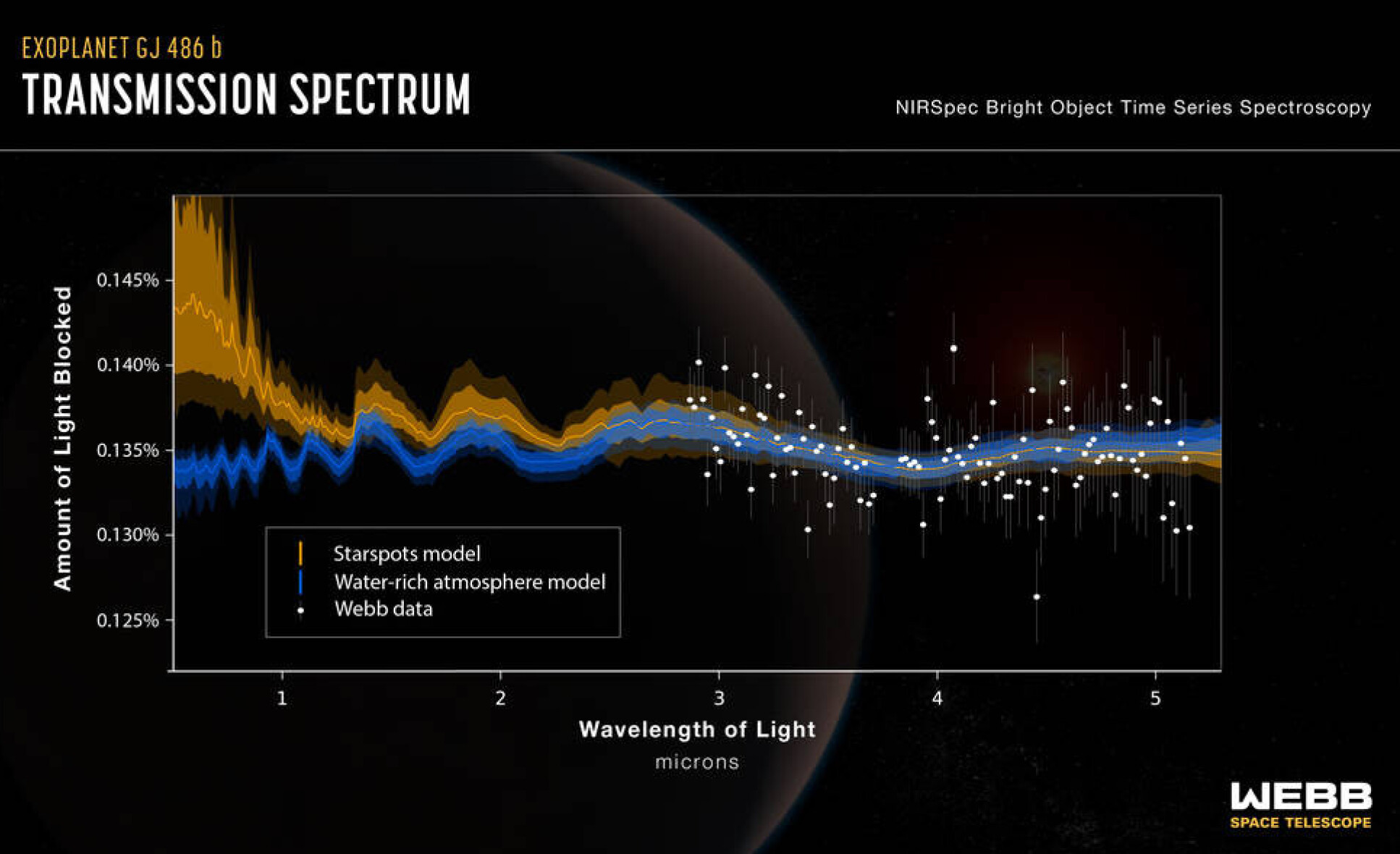2023-05-03 ミュンヘン大学(LMU)
 X-ray (over) and optical pseudo-color (below) images of three low mass clusters identified in the eFEDS survey data. The highest redshift cluster come from a time when the Universe was approximately 10 billion years younger than today. The cluster galaxies in that case are clearly much redder than the galaxies in the other two clusters.
X-ray (over) and optical pseudo-color (below) images of three low mass clusters identified in the eFEDS survey data. The highest redshift cluster come from a time when the Universe was approximately 10 billion years younger than today. The cluster galaxies in that case are clearly much redder than the galaxies in the other two clusters.
© eRosita
◆この現象は、物理学の理解が不完全または誤っている可能性があることを示している。現在の最も感度の高い望遠鏡の一つであるeROSITA X線望遠鏡を使用して、台湾の国立成功大学とドイツのルートヴィヒ・マクシミリアン大学の天文学者たちは、ダークエネルギーに関する初めての研究を発表した。
◆彼らの研究のために、Chiuと彼の同僚は、eFEDSデータに加えて、日本と台湾の天文学コミュニティとプリンストン大学が主導するハイパーシュプリームカムスバル戦略プログラムからの光学データという追加のデータセットを使用しました。このデータを使用してeFEDSの銀河団を特徴付け、弱い重力レンズのプロセスを使用してそれらの質量を測定しました。2つのデータセットの組み合わせにより、eROSITAによって検出された銀河団を用いた最初の宇宙論的研究が可能になりました。
◆彼らは、宇宙の形成の過程で最大の物体である銀河団に焦点を当てた。彼らの研究により、ダークエネルギーが宇宙の総エネルギー密度の約76%を占め、空間に均一に分布し、時間に一定であることが示された。
◆これらの観測結果は、ダークエネルギーを「宇宙定数」として説明することができることを示唆している。
<関連情報>
- https://www.lmu.de/en/newsroom/news-overview/news/cosmology-on-the-trail-of-a-mysterious-force-in-space.html
- https://academic.oup.com/mnras/article-abstract/522/2/1601/7110415
eROSITA最終赤道深度探査における銀河団・銀河群からの宇宙論的制約について Cosmological constraints from galaxy clusters and groups in the eROSITA final equatorial depth survey
I-Non Chiu, Matthias Klein, Joseph Mohr, Sebastian Bocquet
Monthly Notices of the Royal Astronomical Society Published:21 April 2023
DOI:https://doi.org/10.1093/mnras/stad957
ABSTRACT
We present the first cosmological study of a sample of eROSITA clusters, which were identified in the eROSITA Final Equatorial Depth Survey (eFEDS). In a joint selection on X-ray and optical observables, the sample contains 455 clusters within a redshift range of 0.1 < z < 1.2, of which 177 systems are covered by the public data from the Hyper Suprime-Cam (HSC) survey that enables uniform weak-lensing cluster mass constraints. With minimal assumptions, at each cluster redshift we empirically model (1) the scaling relations between the cluster halo mass and the observables, which include the X-ray count rate, the optical richness, and the weak-lensing mass, and (2) the X-ray selection in terms of the completeness function C. Using the richness distribution of the clusters, we directly measure the X-ray completeness and adopt those measurements as informative priors for the parameters of C. In a blinded analysis, we obtain the cosmological constraints
Ωm=0.245+0.048−0.058, σ8=0.833+0.075−0.063, and S8≡σ8(Ωm/0.3)0.3 =0.791+0.028−0.031,
in a flat ΛCDM cosmology. Extending to a flat wCDM cosmology leads to the constraint on the equation of state parameter of the dark energy of w = −1.25 ± 0.47. The eFEDS constraints are in good agreement with the results from the Planck mission, the galaxy–galaxy lensing and clustering analysis of the Dark Energy Survey, and the cluster abundance analysis of the SPT-SZ survey at a level of ≲ 1σ. With the empirical modelling, this work presents the first fully self-consistent cosmological constraints based on a synergy between wide-field X-ray and weak lensing surveys.


